Force, Motion, and Energy
Force, motion, and energy are fundamental concepts in science that help us understand how objects move and interact with each other.
Force
Force is a push or pull on an object. It can cause an object to change its speed, direction, or shape. Forces can be exerted by contact (such as pushing a book) or at a distance (such as the gravitational force between the Earth and the Moon).
Types of Forces:
Motion
Motion is the change in position of an object over time. It can be described in terms of speed, velocity, and acceleration.
Types of Motion:
- Uniform motion
- Non-uniform motion
- Rectilinear motion
- Circular motion
Energy
Energy is the ability to do work. There are different forms of energy, including kinetic energy (energy of motion) and potential energy (stored energy).
Types of Energy:
Study Guide
Key Concepts:
- Define force and give examples of different types of forces.
- Explain the relationship between force, mass, and acceleration (Newton's second law of motion).
- Describe the different types of motion and give examples of each.
- Identify and differentiate between kinetic and potential energy.
- Discuss the conservation of energy and its importance in various physical phenomena.
Practice Questions:
- What is the difference between balanced and unbalanced forces?
- How does energy transfer occur in a simple pendulum?
- Explain the relationship between work, force, and distance moved.
- Give examples of how energy can be transformed from one form to another.
Experiments and Activities:
.◂Science Worksheets and Study Guides Fourth Grade. Force, motion and energy
Study Guide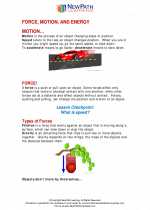 Force, motion and energy
Force, motion and energy  Activity Lesson
Activity Lesson Force, Motion & Energy
Force, Motion & Energy  Worksheet/Answer key
Worksheet/Answer key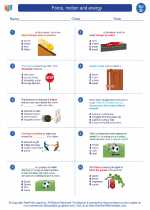 Force, motion and energy
Force, motion and energy  Worksheet/Answer key
Worksheet/Answer key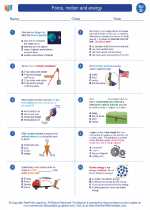 Force, motion and energy
Force, motion and energy  Worksheet/Answer key
Worksheet/Answer key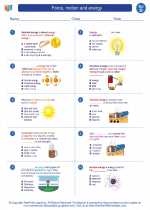 Force, motion and energy
Force, motion and energy  Worksheet/Answer key
Worksheet/Answer key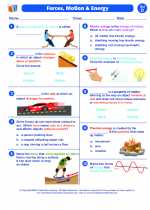 Forces, Motion end Energy
Forces, Motion end Energy  Vocabulary/Answer key
Vocabulary/Answer key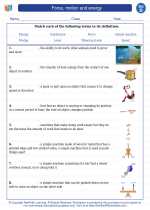 Force, motion and energy
Force, motion and energy  Vocabulary/Answer key
Vocabulary/Answer key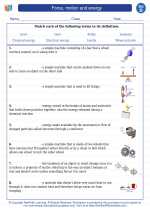 Force, motion and energy
Force, motion and energy  Vocabulary/Answer key
Vocabulary/Answer key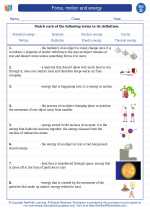 Force, motion and energy
Force, motion and energy 

 Activity Lesson
Activity Lesson
 Worksheet/Answer key
Worksheet/Answer key
 Worksheet/Answer key
Worksheet/Answer key
 Worksheet/Answer key
Worksheet/Answer key
 Worksheet/Answer key
Worksheet/Answer key
 Vocabulary/Answer key
Vocabulary/Answer key
 Vocabulary/Answer key
Vocabulary/Answer key
 Vocabulary/Answer key
Vocabulary/Answer key

The resources above cover the following skills:
PHYSICAL SCIENCE (NGSS)
Energy
Students who demonstrate understanding can:
Use evidence to construct an explanation relating the speed of an object to the energy of that object.